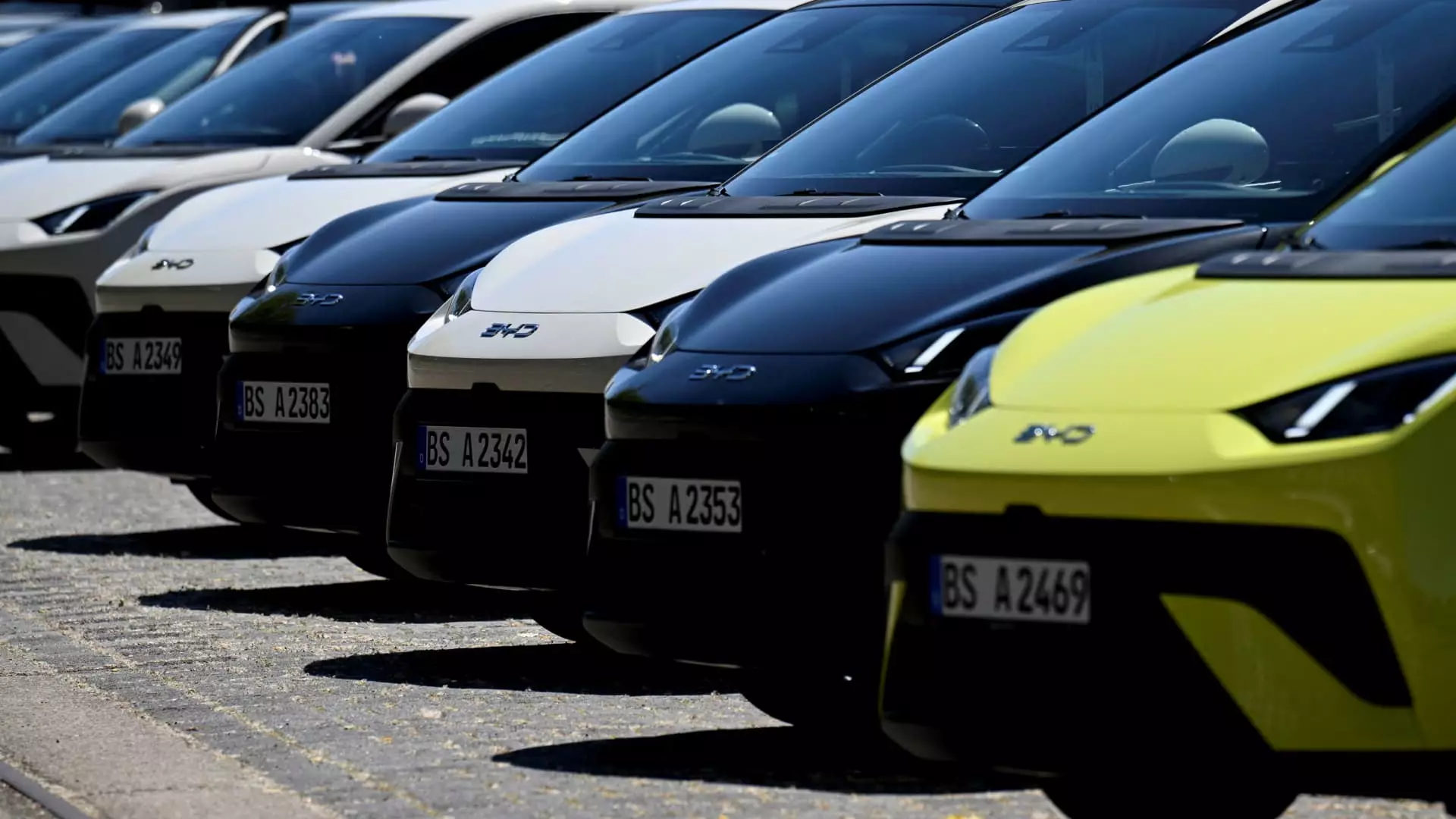As the world shifts towards sustainable energy solutions, China’s electric vehicle (EV) market stands at the forefront of innovation—and calamity. The ongoing price war among automakers in the region illustrates the intense pressure that companies face to adapt or perish in this rapidly evolving environment. While established players like Tesla grapple with declining sales, a youthful brand like BYD continues to solidify its position at the top, albeit not without significant discounts.
The irony is palpable: a market battling for dominance where some companies, including Tesla, have witnessed a steep decline in revenue, while competitors like BYD flaunt their growth figures. The latest data from the China Passenger Car Association reveals that Tesla’s sales plummeted by 15% year-on-year in May. This stark contrast highlights an unfolding battle that pits established giants against nimble innovators, with the specter of price slashing looming ever larger.
Price Competitions: A Double-Edged Sword
The recent pricing strategies employed by BYD exemplify how rapidly the tides can turn in the automotive industry. Even while the company enjoyed a commendable 14% increase in sales, the continuous discounts reveal an underlying tension—a desperate attempt to maintain market position amidst aggressive competition. Analysts from CLSA suggest that despite BYD’s current momentum, the firm is not meeting its sales targets, signaling a potential warning bell for the company.
Interestingly, it’s insights from market analysts that can unveil the true state of play. CLSA’s Xiao Feng identifies Geely Automotive as a “best positioned” contender thanks to its judicious balance between production efficiency and competitive pricing. With market targets suggesting upside for Geely’s shares, the automaker is resonating well with a consumer base eager for quality and affordability, setting up an intriguing narrative about consumer preference in a market dominated by cutthroat competition.
Shifting Tides: A New Era of Competition
One cannot overlook the ripple effects of this price war on emerging players. Companies like Xpeng, which have successfully carved out a niche with advanced technologies and thoughtful marketing, are reaping the benefits. With over 30,000 units sold in May alone, Xpeng’s trajectory signals rising fortunes amid the grime of price reductions. The company’s recent launch of the budget-conscious Mona brand further diversifies its offerings, making it appealing to a wide range of consumers.
Equally interesting is the stability exhibited by firms like Leapmotor and Li Auto. While the former has endured a dip in profits, claiming a net loss in Q1 of this year despite a previous quarter’s gains, Li Auto continues to thrive, holding profitability amidst expanding sales. Their success lies in appealing to distinct consumer segments with well-crafted SUV offerings that blend practicality with modern design—factors that seem to insulate them from the prevailing price war.
Market Dynamics: Lessons in Adaptability
The aptitude for survival amidst such chaos has become evident: flexibility and innovation are signatures of firms that will prevail in this battleground. Analysts at Morgan Stanley have highlighted how Li Auto’s management strategy sets the stage for a solid rebound, a testament to the power of adaptivity in a market otherwise tethered to fluctuating demand and supply chain vulnerabilities.
Fascinatingly, international investors are keeping a wary eye on BYD’s strategies. Concerns loom about tariff hikes in Europe and an inundation of inexpensive cars saturating the market. Still, some analysts cling to the narrative that their overseas prospects remain optimistic, particularly when looking at their premium offerings set to account for a growing share of revenue in forthcoming years.
Looking Ahead: The Future is Uncertain
What does the future hold for the electric vehicle sector in China? Analysts propose that the current price war could lead to a much-needed stabilization of the market, provided that either demand increases or production capacities are curtailed effectively. The juxtaposition of overly optimistic production targets against biting economic realities serves as a grim reminder of impending market corrections.
As companies navigate through this volatility, the need for strategic foresight and innovative thinking becomes paramount. Those firms that can find equilibrium in a customer-focused approach while wrestling with their operational and pricing strategies will emerge not just as survivors but as champions in a fiercely competitive landscape. In this climate of uncertainty, it is survival of the fittest—and only those who innovate and adapt will last in this electrifying race.

